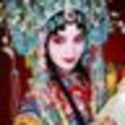-
About
- About Listly
- Community & Support
- Howto
- Chrome Extension
- Bookmarklet
- WordPress Plugin
- Listly Premium
- Privacy
- Terms
- DMCA Copyright
- © 2010-2024 Boomy Labs


 Tedd Joseph
Tedd Joseph
Listly by Tedd Joseph
Famed for its manicured gardens, the Chinese city of Suzhou is also home to an extraordinary collection of Buddhist and Taoist temples. Here are a few favourites to see on your next trip.

Located at the summit of Tiger Hill is the oldest pagoda in Suzhou, the Yunyan Pagoda, easily the most recognisable landmark in the city. Also known as the Huqiu Tower, this eight sided temple rises up seven stories and is estimated to be over a 1000 years old. In addition, its prominent tilt of 3.5 degrees, has earned it the nickname "The leaning tower of China". The pagoda is only one of a few structures left standing from the original Yunyan temple.

Wildly considered to be among the top ten greatest temples in China, the Hanshan Temple is a Buddhist temple and monastery that dates back more than 1500 years and was first made famous by its inclusion in the classical Tang Dynasty poem called "Mooring for the Night at Fengqiao Bridge" as well as the annual bell ringing ceremony on New Year's Eve when large crowds gathering to hear its special sound. Also among the temple's best attractions are its Grand Prayer Hall, the Sutra Library and the Puming Pagoda. The pagoda offers an excellent viewpoint over the Suzhou city's skyline, from green parks and modern commercial buildings to Suzhou Apartments like the Somerset Emerald City Suzhou, this is a great vantage point to really take in the city.

Located in the heart of the city, the Xuanmiao Taoist Temple, or Temple of Mystery, is said to be the only existing example of Song dynasty architecture. With a history dating back to 276 AD, the temple has seen many renovations due to damages sustained from the wars of past dynasties. The temple's main attraction is the Three Purities Hall, which features massive pillars skilfully inlaid with Taoist deities. The temple is also famous for Taoist music in Suzhou and it's not uncommon to see visitors awed into silence by the temple monks' entrancing melodies.

This temple goes by many names, the Suzhou Temple of Literature and the Suzhou Stone Inscription Museum; The Confucian Temple was the first temple school in China, but is most famous for housing the four greatest steles of the Song dynasty. Each stele represents the sky, ground, people and city, and details everything from the city's canal systems, road work to ancient astronomy charts from the year 1229 onward. Apart from the steles, the temple's immense collection of historical artefacts includes over 3,000 inscriptions, so there's plenty to see at this prized temple.

Also called the West Garden Temple, this is the largest Buddhist monastery in Suzhou. Perched on nearly 2.5 acres, the 700-year-old temple exhibits a flawless blend of architecture, art and landscaped gardens unique to this temple. The most famous spot here is the Arhat Temple which houses a collection of 500 life-sized statues of gilded Buddhist saints, each with a different name and facial expression, which are said to bring good luck to visitors who view them.
